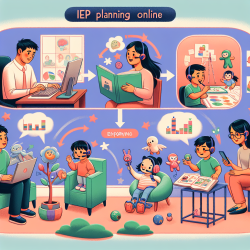Introduction
In the ever-evolving landscape of public health, the COVID-19 pandemic has highlighted the critical need for effective vaccine distribution strategies, especially for equity-deserving and high-risk populations. A recent study titled "What are effective vaccine distribution approaches for equity-deserving and high-risk populations during COVID-19? Exploring best practices and recommendations in Canada" provides invaluable insights that can be applied beyond public health to other fields, including speech-language pathology. As practitioners, understanding these strategies can enhance our ability to serve diverse communities effectively.
Key Findings from the Study
The study employs a mixed-methods approach, utilizing both qualitative and quantitative data to explore vaccine distribution strategies across seven Canadian provinces. The research identifies several factors that influence the success of these strategies, guided by the Socio-Ecological Model and the Vaccine Hesitancy Matrix frameworks. Here are some key takeaways:
- Community Engagement: Engaging local communities and leveraging existing trust networks, such as primary care providers and pharmacists, can significantly reduce vaccine hesitancy.
- Tailored Communication: Providing culturally and linguistically appropriate communication materials is crucial for reaching diverse populations.
- Flexible Delivery Channels: Utilizing a variety of distribution channels, including mobile clinics and community centers, can improve accessibility for underserved populations.
- Policy and Collaboration: Collaborative efforts between policymakers, public health officials, and community stakeholders are essential for designing effective strategies.
Implications for Practitioners
For speech-language pathologists and other practitioners working with children, these findings offer valuable lessons in creating equitable and effective service delivery models. Here’s how we can apply these insights:
- Build Trust: Establishing trust with families and communities is paramount. Collaborate with local organizations and community leaders to reach families who may be hesitant or unaware of available services.
- Customize Communication: Develop materials and resources that are accessible and culturally relevant to the populations you serve. This includes translating materials into multiple languages and using visuals to aid understanding.
- Adapt Service Delivery: Consider flexible service delivery options, such as online therapy sessions, home visits, or community-based programs, to meet the diverse needs of children and families.
- Advocate for Policy Change: Engage with policymakers to advocate for policies that support equitable access to speech-language pathology services, particularly for underserved communities.
Encouraging Further Research
While the study provides a comprehensive overview of vaccine distribution strategies, there is still much to learn about how these approaches can be adapted and applied in different contexts. Practitioners are encouraged to conduct further research and share their findings to contribute to a growing body of knowledge that supports equitable service delivery.
To read the original research paper, please follow this link: What are effective vaccine distribution approaches for equity-deserving and high-risk populations during COVID-19? Exploring best practices and recommendations in Canada: protocol for a mixed-methods multiple case codesign study.










